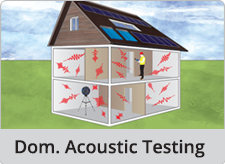Offices Nationwide

Air Testing & Leakage
Our engineers use Thermal camera and extensive knowledge of buildings to help find leakage areas within the building and can advice of these.

Sound Levels
Decibels (dB) are most commonly used as a measure of sound level, but they are also used in electronics, signals and communications...more
Part L1B
Conservation of fuel and power in Existing Dwellings

Hertfordshire - SAP Calcs - 020 3390 0301
The office that covers this area is: London
The towns & cities that are covered within this county are:
Abbots Langley, Baldock, Barnet, Berkhamsted, Bishop's Stortford, Borehamwood, Broxbourne, Buntingford, Bushey, Cheshunt, Chorleywood, Harpenden, Hatfield, Hemel Hempstead, Hertford, Hitchin, Hoddesdon, King's Langley, Knebworth, Letchworth, Much Hadham, Potters Bar, Radlett, Redbourn, Rickmansworth, Royston, Sawbridgeworth, St. Albans, Stevenage, Tring, Waltham Cross, Ware, Watford, Welwyn Garden City, Welwyn,
Phone Number: 020 3390 0301 Email: hertfordshire@e2consultants.co.uk
SAP Calculations is sometimes referred to as SAP Conversion Calcs, SAP Conversion Calculations, Part L1B Compliance, SAP Conversion Assessment, SAP Conversion rating, SAP Conversion Calc.
What Is A SAP Calculation?
A SAP rating represents the cost of energy required by a property over the course of a year with a score of 100 meaning there's no energy cost. This is calculated from lighting, heating, hot water systems, renewable technolgies used and the elements of structure. The higher the score, the lower the cost of running it.
SAP calculations are the Government's Standard Assessment Procedure for Energy Ratings. In order to produce an On Construction EPC (Energy Performance Certificate) or a Predicted Energy Assessment (PEA), a SAP is required, as this is the calculation these certificates are based on.
How Is A SAP Assessment Undertaken?
The SAP software will determine if a building complies with Building Regulations in Hertfordshire using the information provided by the SAP assessment. This crucial information relates to the type of dwelling, floors, walls, the roof, windows, doors, lighting, renewable technologies, 'U' values, hot water and ventilation.
A SAP is done off-site but requires plans and drawings of the site in order to be calculated. Amongst other things, the SAP assessor will determine how good the thermal elements are in the floors and walls and how well heat passes through these elements - this is known as a 'U' value. A high 'U' value represents a high amount of heat lost - this is used in the SAP calculation.
Why Do I Need A SAP Calculation?
Any conversions or new dwellings need to have a SAP Calculation and Predicted EPC before any work can begin as outlined in Part L of Building Regulations in Hertfordshire in 2006.
You will need to provide information about energy efficiency in a Predicted Energy Assessment (PEA) if you are planning to sell the property before it has been built.
It is the responsibility of the builder to provide any On Construction EPCs when a home is constructed. This will also apply if a building is converted into fewer or more units (material change of use) and changes are made to the heating, hot water provision or air conditioning/ventilation services.
Our other services include:
SAP Calcs can also be known as:
Domestic Carbon Emission Calculation, Domestic Carbon Emission Calc, SAP Calculations, TER DER Calc, TER DER Calculation, SAP Assessment, SAP Rating, Standard Assessment Procedure, SAP Calc,


Copyright 2025 E2 Specialist Consultants Limited
Company No. 06728970












































